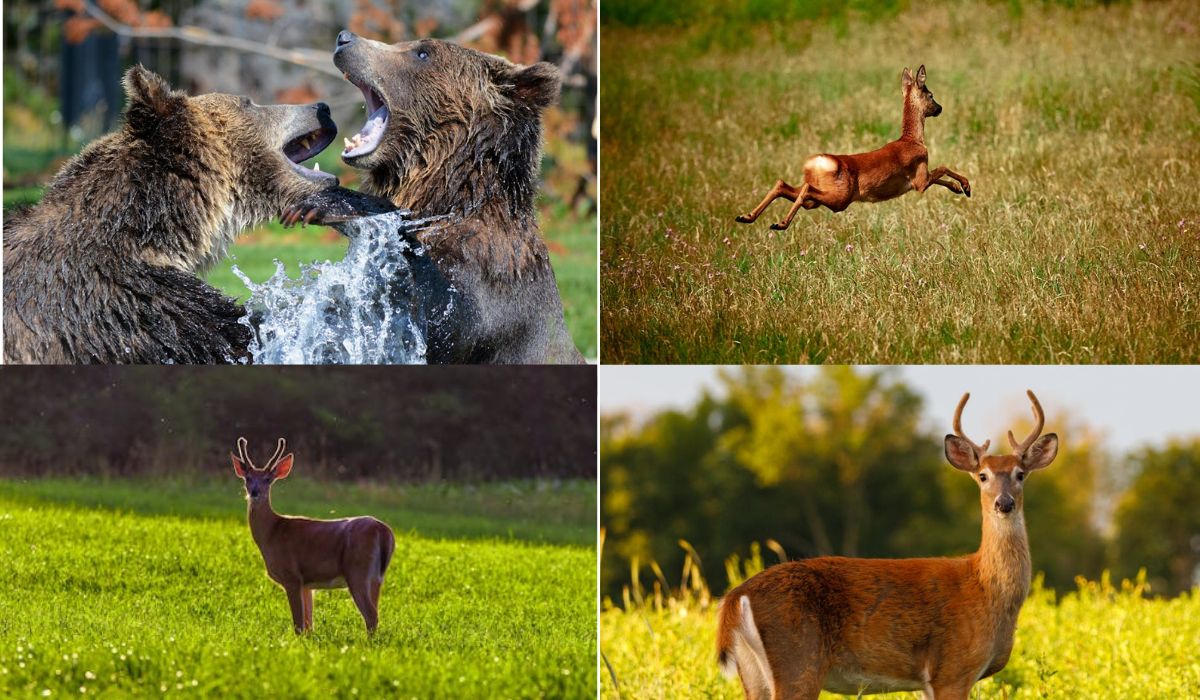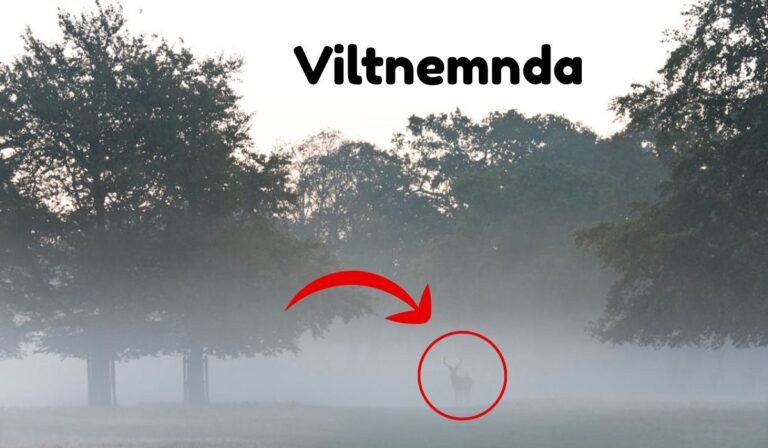If you’ve ever wondered who shows up in Norway when a moose limps across a highway, who decides how many deer can be harvested in a valley, or who mediates when beavers flood a farm road, the answer often traces back to Viltnemnda—the municipal wildlife board. For a U.S. reader, think of Viltnemnda as a local, legally mandated committee that blends duties you might associate with a county commission, a state wildlife agency, and volunteer search-and-rescue. This guide explains what Viltnemnda does, the laws that frame its work, how hunting and wildlife management are coordinated, and what the public can expect when wildlife and people collide—literally and figuratively.
Quick Information Table
| Data Point | Detail |
|---|---|
| Role Focus | Municipal wildlife response & management (Viltnemnda) |
| Typical Experience Window | 8–15 seasons managing moose/deer, beaver, and geese conflicts |
| Peak Workload | September–November (rut and primary hunting season) |
| Core Legal Framework | Viltloven (Wildlife Act, 1981); Naturmangfoldloven (Nature Diversity Act, 2009) |
| Primary Partners | Police, road authorities, hunters’ associations, landowners |
| Common Field Missions | Traffic-collision follow-ups, injured game dispatch, nuisance permits |
| Routine Data Inputs | Harvest stats, collision registers, landowner reports, camera traps |
| Most Frequent Permits | Beaver dam interventions; emergency culls for severely injured ungulates |
What Viltnemnda Is—and Why It Matters

At its core, Viltnemnda is the municipality’s wildlife board, empowered under national law to handle local wildlife management where people live, drive, and farm. First, it is a problem-solver that coordinates responses to injured or dangerous wild animals, ensuring public safety while minimizing animal suffering. Second, it is a manager that shapes long-term population outcomes for species like moose and roe deer by advising on quotas and bestandsplaner (multi-year herd plans). Third, it is a convener that brings together police, hunters, landowners, and road authorities to make quick calls during emergencies and measured decisions between seasons.
PEOPLE ALSO READ : Why Korpenpelloz Is Becoming So Popular Worldwide
The Legal Backbone: How Norwegian Law Frames the Board
Norway’s wildlife governance gives Viltnemnda clear rails to run on. First, Viltloven (the Wildlife Act) establishes the state’s ownership and stewardship of wild game and sets rules for hunting, culling, and humane dispatch; municipalities act within this framework. Second, Naturmangfoldloven (the Nature Diversity Act) requires decisions to be knowledge-based and precautionary, so boards weigh population data and habitat conditions before authorizing action. Third, related rules intersect—police and road authorities carry public-safety mandates, while municipal wildlife boards implement field responses and local management, ensuring decisions align with national conservation goals and animal-welfare standards (Lovdata is the official legal reference for both acts).
Responsibilities in Practice: Three Pillars You’ll See on the Ground
Across municipalities, Viltnemnda’s work tends to cluster into three pillars. First, population stewardship: reviewing harvest results, advising on quotas, and endorsing or adjusting bestandsplaner so herds remain healthy, huntable, and ecologically balanced. Second, damage prevention and conflict mitigation: addressing beaver flooding of roads, geese grazing on crops, or deer browsing in urban gardens with tools that range from non-lethal deterrence to carefully controlled culls. Third, public-safety response: when animals are injured in collisions or enter dense neighborhoods, the board mobilizes trained personnel to locate, assess, and—if necessary—humanely dispatch the animal.
Hunting and Quotas: How Decisions Get Made
Many U.S. readers will recognize familiar rhythms in how hunting decisions are structured, but with a Norwegian twist. First, landowners and hunting teams propose bestandsplaner that set multi-year goals for local moose and deer, which Viltnemnda reviews against biological data and municipal objectives. Second, the board helps translate those plans into annual quotas and tag structures that match observed recruitment, browse pressure, and collision risk. Third, compliance is tracked closely—harvest reporting, jaw collections or age/sex data, and collaboration with hunters’ associations provide feedback loops that keep plans evidence-based and adaptable.
Collisions and Injured Game: What Happens and Who to Call
When wildlife is struck by a vehicle or found wounded, the response is choreographed and quick. First, the police typically take the initial call (for both emergencies and non-emergency reporting), then notify the municipality’s wildlife response team. Second, Viltnemnda activates trained trackers and dog handlers, who follow blood trails, assess injury severity, and decide on humane dispatch or veterinary consultation. Third, documentation—location, time, species, sex, and disposition—feeds collision registers and informs future management. Within that workflow, the public’s role is simple and vital:
-
Move to safety and call the police to report the incident.
-
Do not pursue, approach, or attempt to dispatch the animal yourself.
-
If possible, mark the last seen point with a visible object so trackers can start accurately.
-
Provide your contact details and a brief description of the animal and direction of travel.
-
Stay available for follow-up if the search team needs clarification.
Permits for Nuisance Wildlife and Urban Conflicts
Permitting sits at the intersection of law, ethics, and pragmatism, and Viltnemnda serves as the local gatekeeper. First, if non-lethal measures are feasible—think flow devices in beaver dams or scaring geese off fields—those are prioritized under Norway’s precautionary approach. Second, when damage is significant or risk is acute, targeted culls can be authorized within legal limits, often time-bound and location-specific to avoid impacting broader population dynamics. Third, documentation and proportionality matter: applicants should show attempted deterrents, quantify damages, and accept monitoring conditions that ensure interventions stay narrowly tailored.
Data and Technology: Why Evidence Drives Every Decision
Modern wildlife management in Norway is conspicuously data-driven. First, harvest statistics—age/sex structure, calf recruitment, and hunting effort—tell managers how populations are trending and where quotas may need recalibration. Second, collision registers and traffic models highlight road segments and seasons of heightened risk, allowing Viltnemnda to recommend signage, speed adjustments, or vegetation clearing near hotspots. Third, field tech—from thermal drones used in some municipalities to camera traps and citizen-science apps—improves detection of injured animals and validates where non-lethal conflict mitigation might work best. Decisions are then documented to meet Nature Diversity Act standards for knowledge-based governance.
Contacting Viltnemnda: How the Public and Landowners Engage
Getting help or starting a management conversation is straightforward if you follow the chain. First, in urgent situations involving injured or dangerous animals, call the police; they will route to the municipal wildlife team and ensure scene safety. Second, for non-urgent conflicts (like recurring beaver damming or crop damage), contact the municipality’s environmental office, which coordinates with Viltnemnda on site assessments and potential permits. Third, if you’re a landowner or hunting coordinator working on a bestandsplan, engage early—bring harvest data, browse observations, and stakeholder input so the board can assess your plan against municipal and regional objectives.
How Viltnemnda Compares to U.S. Systems
While Norway’s wildlife is obviously different, the governance logic will feel familiar. First, like a state fish and wildlife agency in the U.S., national authorities set broad rules, but local entities—in this case, municipalities through Viltnemnda—handle day-to-day implementation. Second, the county-level feel is present: boards work with road agencies, sheriffs/police, and landowners, similar to how U.S. counties coordinate with state DNRs and highway patrols for deer strikes. Third, sovereignty and stakeholder rights matter in both countries; in Norway, landowners’ hunting rights are integrated with public oversight, while in the U.S., states regulate wildlife on behalf of the public but frequently defer to private property considerations and, in many regions, tribal co-management.
Ethics, Animal Welfare, and Professional Standards
Norwegian wildlife work leans hard into ethics and training. First, humane dispatch is mandatory: trained personnel and dogs are used to track and minimize suffering, and lethal action is carefully documented. Second, competency requirements—from marksmanship to large-ungulate handling—are standard for responders and are refreshed regularly during the off-season. Third, transparency and accountability are built in: decisions cite the legal basis, mention data sources, and balance conservation, safety, and socioeconomics, aligning with international best practices for ethical wildlife governance.
Money, Liability, and Insurance: The Unseen Side of Wildlife Incidents
The administrative details are practical but important. First, insurance and compensation may cover vehicle damage from wildlife collisions (subject to local policy terms), but reporting promptly and securing a police incident number typically smooths claims. Second, municipal costs for field response (fuel, dogs, dispatch time) are public obligations in many cases, while landowner-requested nuisance actions may carry fees or conditions tied to permits. Third, liability and compliance rest with the applicant or hunter when conditions are violated—permits are specific, and exceeding their scope can trigger penalties under the Wildlife Act.
PEOPLE ALSO READ : Eco-Friendly Pappedeckel: Sustainable Alternatives to Plastic
Myths and Expectations: Calibrating What “Management” Can Do
A clear-eyed view helps communities support good outcomes. First, management doesn’t eliminate risk—it reduces it; even with optimized quotas and fencing, wildlife will still cross roads and enter fields. Second, culling isn’t a cure-all; without habitat changes or traffic mitigation, removing a few animals in a hotspot often yields only short-term relief. Third, data is destiny: better reporting, thorough carcass inspections, and consistent harvest records make next season’s decisions measurably better, which is why Viltnemnda pushes for accurate, timely information from hunters and the public.
Conclusion: The Value of a Local, Law-Grounded Board
At its best, Viltnemnda is the local face of Norway’s wildlife promise: protect biodiversity, support sustainable hunting, and keep people safe when wild animals share human spaces. The board’s authority springs from national law, its legitimacy from transparent, data-informed decisions, and its effectiveness from tight coordination with police, hunters, landowners, and road authorities.
For U.S. readers, imagine a county-level wildlife task force that actually has legal tools, ecological data, and trained responders on call—that’s Viltnemnda in a nutshell. If you remember one thing, make it this: when wildlife and people collide, the most humane and effective outcomes happen where law, science, and local partnerships meet.
Frequently Asked Questions (FAQs)
1) What exactly is Viltnemnda?
Viltnemnda is the municipal wildlife board in Norway, responsible for local wildlife responses and management. It coordinates emergency dispatch for injured animals, advises on hunting quotas, and issues or recommends permits for nuisance wildlife under national laws like the Wildlife Act and Nature Diversity Act.
2) Who should I call after hitting a wild animal with my car in Norway?
Call the police first. They will log the incident, ensure road safety, and notify the municipality’s wildlife response team. Do not approach the animal; instead, mark the last seen location if it’s safe and provide clear details to responders.
3) How are hunting quotas decided in Norway?
Quotas evolve from bestandsplaner, which are multi-year herd plans proposed by landowners and hunters and reviewed by the municipality. Viltnemnda balances those plans with biological data—harvest results, collision trends, and habitat conditions—to set annual allocations that meet conservation and safety objectives.
4) Can Viltnemnda remove problem animals in towns or on private land?
Yes, within strict legal limits. The board prioritizes non-lethal measures (like beaver flow devices or scaring techniques) and only authorizes lethal control when damage is significant or public safety is at risk. Any cull is specific in time, place, and method and must be documented.
5) How does this compare to wildlife management in the United States?
The closest analog is a blend of a county commission and a state fish and wildlife agency. National rules in Norway provide a consistent framework, while Viltnemnda handles local execution—similar to how U.S. states set policy but rely on local partners for on-the-ground management and collision response.
FOR MORE : NEWS TAKER


